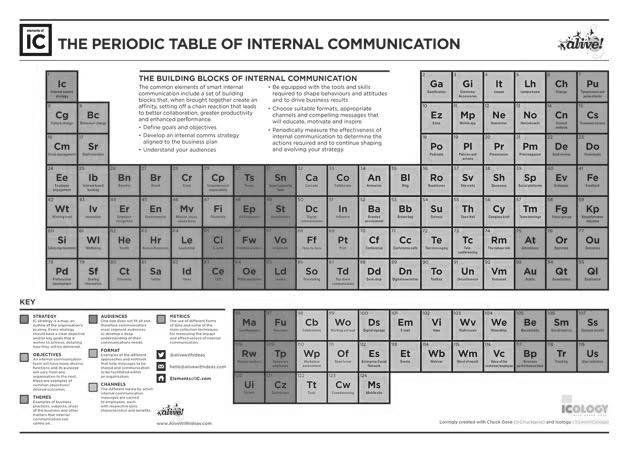 The periodic table was created in 1869 to bring together all the known chemical elements under one roof enabling them to be studied, discussed and understood. Russian chemist Dimitri Mendeleev also predicted the discovery of other elements, and he purposely left spaces open for them.
The periodic table was created in 1869 to bring together all the known chemical elements under one roof enabling them to be studied, discussed and understood. Russian chemist Dimitri Mendeleev also predicted the discovery of other elements, and he purposely left spaces open for them.
We’ve recently worked with Chuck Gose, Corporate Communications VP, speaker & host of the internal comms podcast, ICology to replicate this original idea for internal communicators. And with hundreds of downloads from comms pros worldwide, it’s already proving to be very popular…
The Idea
The idea was to create a table of terms that would bring together all the elements of internal communication under one roof. We split the table across seven categories: Strategy, Objectives, Themes, Audiences, Formats, Channels and Metrics and populated each category with a number of common comms terms. From there, we’ve built the Periodic Table of Internal Communication, which you can download here.
A cracking response
The feedback so far has been fantastic. We’ve been overwhelmed with the positive responses…

